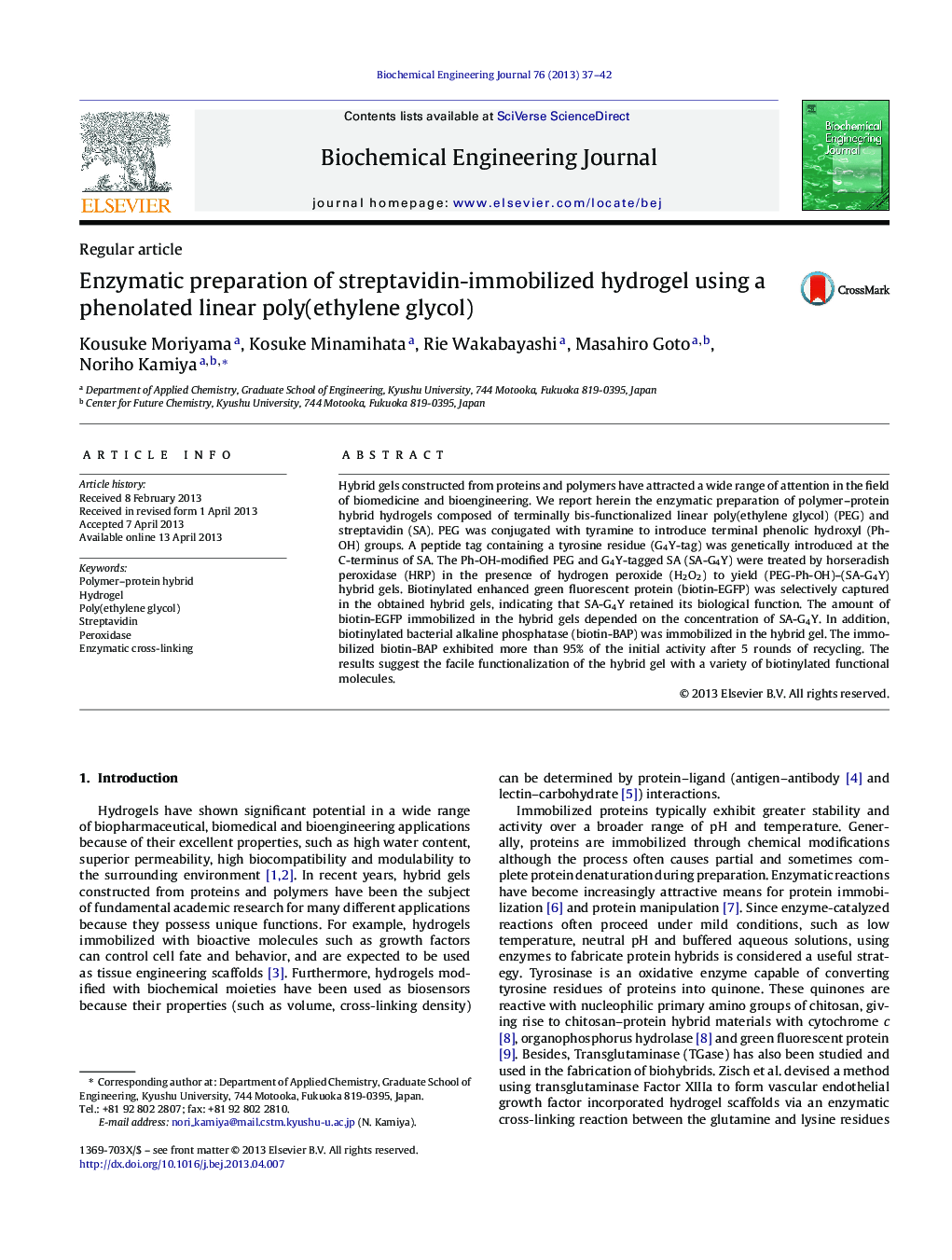| Article ID | Journal | Published Year | Pages | File Type |
|---|---|---|---|---|
| 3381 | Biochemical Engineering Journal | 2013 | 6 Pages |
•Horseradish peroxidase (HRP) catalysis was employed for preparation of synthetic polymer–protein hybrid hydrogel.•Streptavidin fused with a HRP-reactive short peptide tag was covalently immobilized in the hydrogel.•Immobilized streptavidin retained biotin-binding ability in the hybrid hydrogel.•Biotinylated proteins were stably captured in the hydrogel via avidin–biotin interaction.
Hybrid gels constructed from proteins and polymers have attracted a wide range of attention in the field of biomedicine and bioengineering. We report herein the enzymatic preparation of polymer–protein hybrid hydrogels composed of terminally bis-functionalized linear poly(ethylene glycol) (PEG) and streptavidin (SA). PEG was conjugated with tyramine to introduce terminal phenolic hydroxyl (Ph-OH) groups. A peptide tag containing a tyrosine residue (G4Y-tag) was genetically introduced at the C-terminus of SA. The Ph-OH-modified PEG and G4Y-tagged SA (SA-G4Y) were treated by horseradish peroxidase (HRP) in the presence of hydrogen peroxide (H2O2) to yield (PEG-Ph-OH)–(SA-G4Y) hybrid gels. Biotinylated enhanced green fluorescent protein (biotin-EGFP) was selectively captured in the obtained hybrid gels, indicating that SA-G4Y retained its biological function. The amount of biotin-EGFP immobilized in the hybrid gels depended on the concentration of SA-G4Y. In addition, biotinylated bacterial alkaline phosphatase (biotin-BAP) was immobilized in the hybrid gel. The immobilized biotin-BAP exhibited more than 95% of the initial activity after 5 rounds of recycling. The results suggest the facile functionalization of the hybrid gel with a variety of biotinylated functional molecules.
